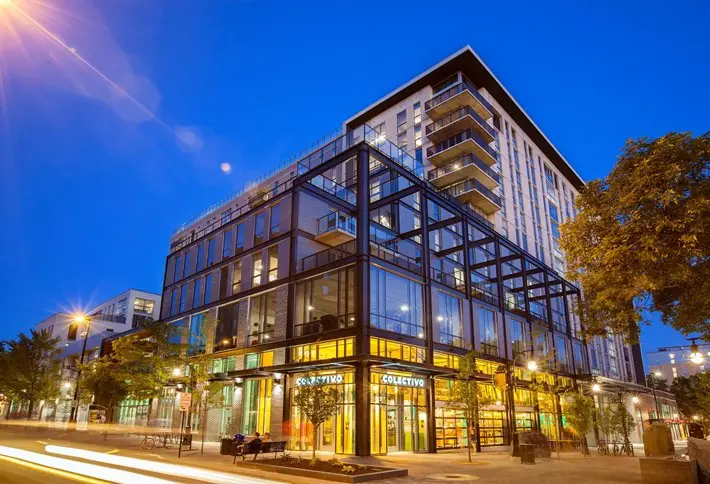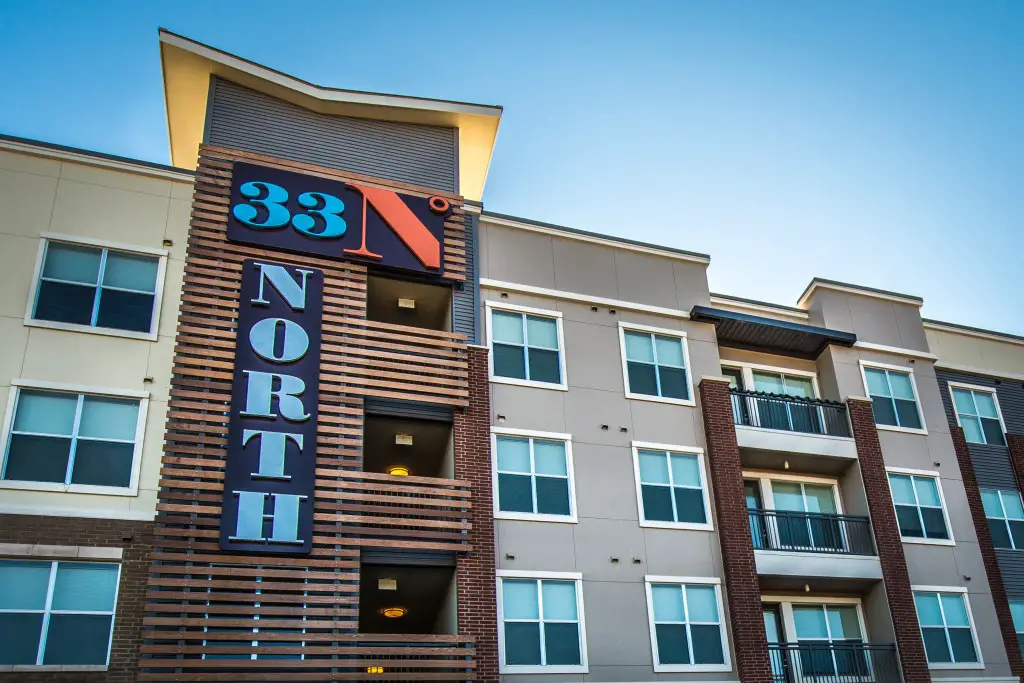Luxury Student Housing and Its Location, Location, Location
If the housing closest to campus is unaffordable, lower-income students are the ones who suffer.
By Josephine Werni, University of Minnesota Twin Cities
Equipped with glittering stainless steel appliances, granite counter tops, hardwood floors, Jacuzzis, private tennis courts and spacious balconies designed for Instagramable skyline views, student housing has never looked less like “student housing.”
Now, students can drunkenly vomit into the manicured shrubberies that line the bottom of these of new high rises, rather than some grimy, trash littered median. It’s no question that these extravagant apartments have reshaped the student-housing schema, though whether or not it’s entirely for the better is debatable.

For starters, I’d like to clarify that I’m not condemning luxury housing units or the people who reside in them, nor am I suggesting that shitty and/or cramped living environments are acceptable and should be inflicted upon everyone (because that’s how it’s always been, dammit!). I’m just here to talk a little bit about location.
The mere existence of fancy college apartments isn’t problematic. In fact, it’s about time that students are being expected to dwell in someplace roomier than a prison bunker and classier than the Animal House. The issue at hand is the fact that, at many large, urban universities in particular, luxury student housing units have begun to dominate the areas that lie directly outside of these campuses.
Some of these new complexes are being built on plots that weren’t being effectively utilized by anything else. That’s totally cool. Others, unfortunately, are being constructed upon the fresh graves of older, more affordable student apartment buildings. Not so cool. These adjoining college neighborhoods are the super convenient nuclei of off campus student life, so it kind of sucks when the majority of the housing options aren’t attainable by average and lower income students.
As a result, students who can’t afford to pay $800+ a month are forced to live farther away from campus.
Having to live farther away from campus puts these students at a disadvantage in terms of convenience, finances and social involvement at college.
Beginning with the obvious, students who live outside of the reasonable walking distance range will need to procure a different mode of transportation. The only alternative manner of movement that is guaranteed to be free is bicycling. You can cover a good amount of ground in little time on a bike and get some exercise while doing it.
However, if you live in a place with real seasons, biking is only an option for roughly half of the school year. Unless you happen to be one of the very few and proud (and possibly masochistic) snow bicyclists—if that’s the case, good for you. You are more determined and resilient than I.
If you don’t own a bike, don’t like biking, the weather doesn’t permit it or you live really far out there, you’ll either need to drive or use public transportation. Because low-income students aren’t able to afford super steep rent prices, they’re more likely to not pay for a car and the expensive upkeep that comes with one. If they do happen to have a car, it’s still expensive enough to park at most large universities to dissuade most students from making a regular habit of driving to school.
The remaining options are either bum rides from the people who love you, or to familiarize yourself with public transportation. Public transportation is a wonderful thing, but the point is that being required to use it costs students time and money that they would otherwise not have to spend. This is one of the primary ways that students who have to live farther away from campus due to financial constraints are often further disadvantaged by the situation.

Additionally, less affluent students often need to hold down a job while they are going to school. Having to live farther away from campus means having to live farther away from those wonderful, cushy campus jobs—the kinds of jobs where you get paid to sit at a desk and do homework for 15-or-so hours a week. Sure, it’s definitely convenient to work where you to go to class, but it’s still not quite as convenient if you don’t live close by. For instance, students who live farther away might not want to commute home from campus at 1:00am when they get off work after serving late night tacos at the dining hall.
As I mentioned before, low-income students are less likely to own a car. Not having a car severely limits your job options when you can only seek employment where you can walk and/or where public transportation will take you.
Finally, it’s also worth recognizing that living in outer student neighborhoods can disadvantage poorer students not only financially, but socially as well. Even if many of the outer neighborhoods have a significant student population, it’s not quite the same as being right in the thick of it. It’s an electric environment unlike anything else you’ll experience later in life.
As an upperclassman transfer who came to my school already knowing a handful of people, living in an outer neighborhood hasn’t left me stricken with FOMO. However, I can understand why it might be hard as a sophomore, fresh out of the dorms, to suddenly be so removed from everything.
Sometimes, when I’m strolling around Dinkytown (yes, that’s what UMN’s college neighborhood is officially named) during homecoming, I get a little wistful. I think about what it would have been like to start out there as an underclassman in this environment. Then I remember that due to the massive amount of development that’s occurred in the past five years, there’s only one building that I can think of in the whole area that I, and most people I know, could possibly afford.
Overall, I feel that it is the responsibility of both the university and the community to make sure that the housing situation in the neighborhoods surrounding universities remains diverse and accessible to students of all different levels of income. Obviously, there is a demand for luxury student housing as can be discerned by their booming popularity, but a decent amount of budget-friendly options should also be kept around. After all, variety is the spice of life.















